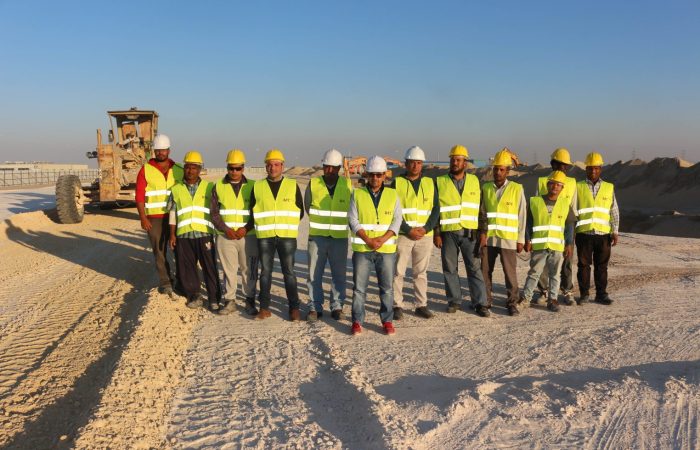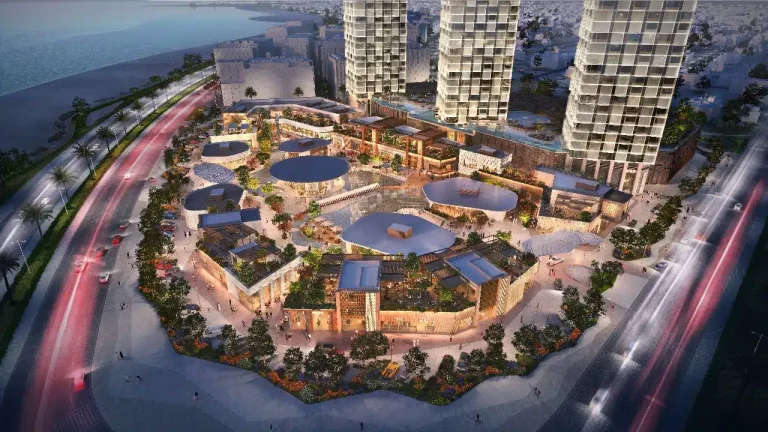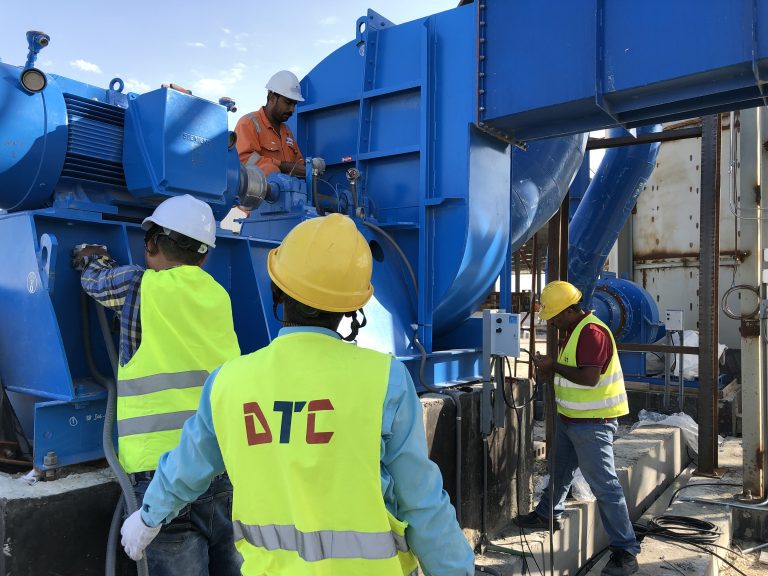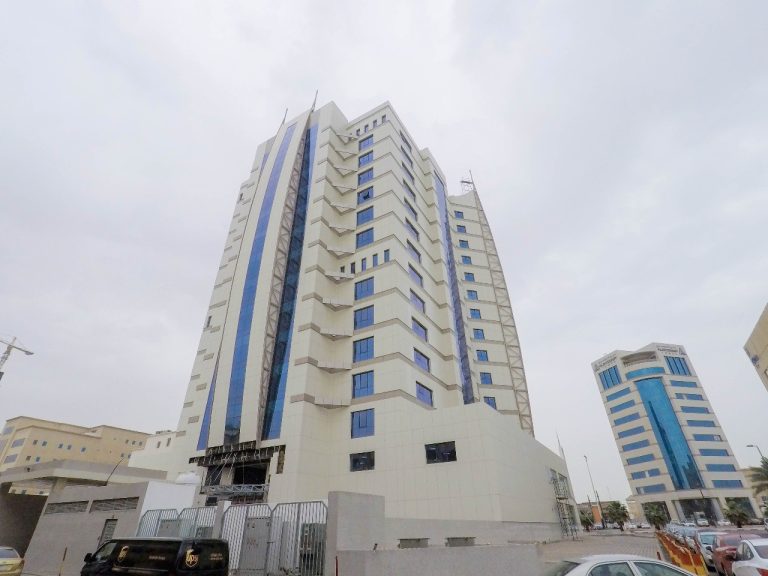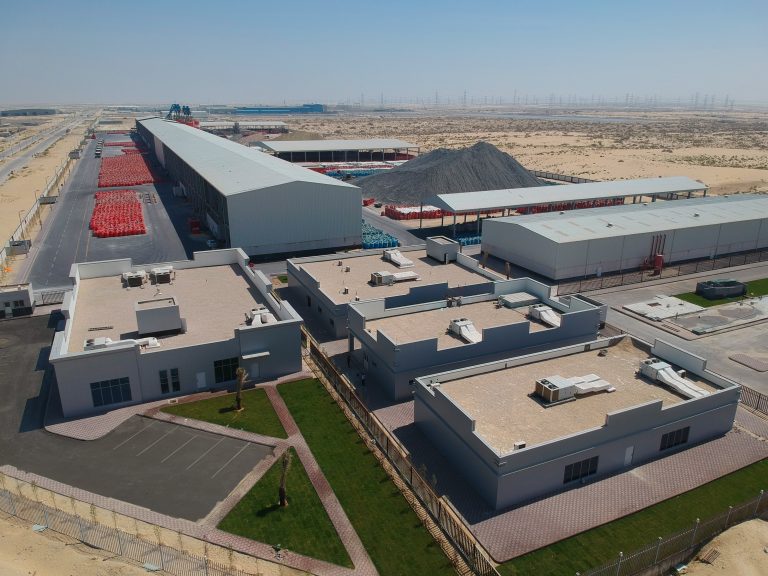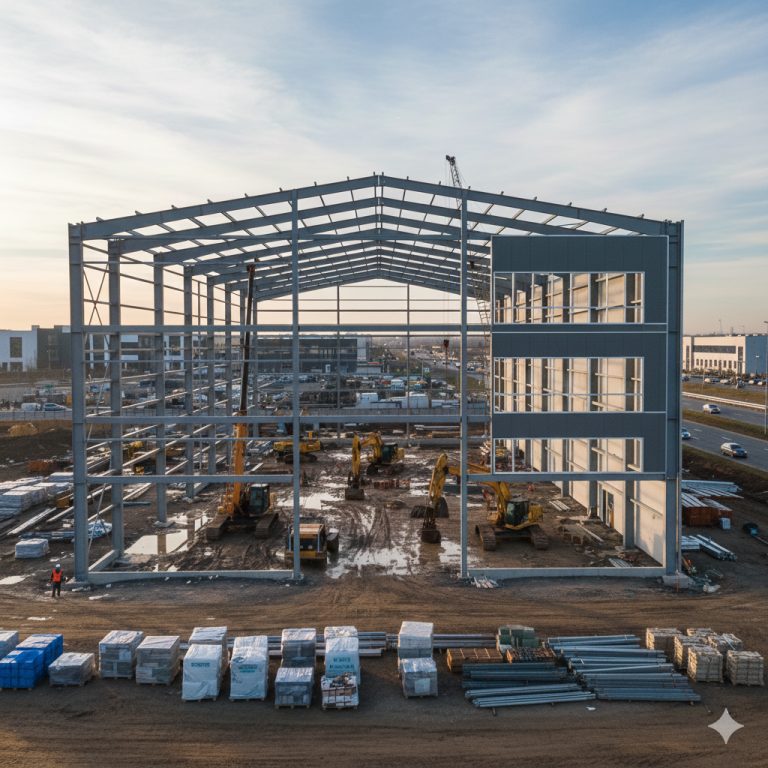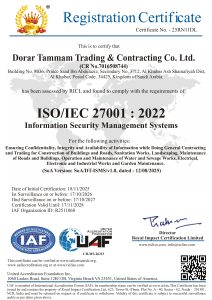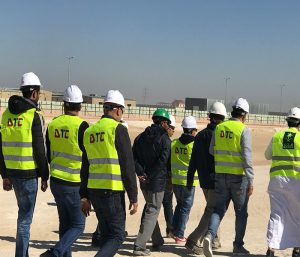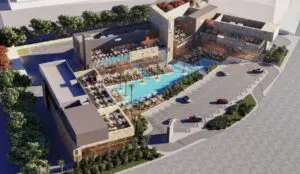industrial steel structures mechanical systems MEP works
Industrial Steel Structures, Mechanical Systems & MEP Works: A Strategic Blueprint for Saudi Arabia’s Industrial Construction Landscape
Introduction
In the ambitious growth trajectory of Saudi Arabia, industrial construction plays a pivotal role. Central to that realm are industrial steel structures, advanced mechanical systems, and integrated MEP works. The synergy of these three disciplines underpins modern factories, warehouses, processing plants, and logistics hubs. In this article we will explore how industrial steel structures, mechanical systems and MEP works come together in Saudi Arabia’s industrial sector, the technologies, challenges and opportunities, and how contractors and stakeholders can navigate the landscape successfully.
Section 1: The Strategic Role of Industrial Steel Structures
Industrial steel structures form the skeleton for modern industrial facilities. The design and fabrication of structural steel bridges the gap between architectural aspirations, functional layout and operational efficiency.
1.1 What are Industrial Steel Structures?
Industrial steel structures refer to frameworks and load‐bearing components fabricated from structural steel (columns, beams, trusses, braces) for factories, warehouses, heavy plants and other industrial buildings. Such structures offer high strength‐to‐weight ratio, flexibility in layout, speed of erection and scalability.
For example, in Saudi Arabia, contractors specializing in steel structure building and pre‐engineered buildings (PEB) highlight steel as the backbone of industrial façades and internal spans.
1.2 Why steel is preferred in industrial construction
-
Speed: Prefabricated steel components accelerate construction timelines.
-
Span Capability: Steel enables large open floor areas, minimal internal columns, ideal for heavy machinery and logistics.
-
Durability & Maintenance: Steel structures are robust, and with proper coating, fireproofing and treatment they endure industrial duty.
-
Flexibility & Expansion: Industrial facilities often require future expansion; steel frames facilitate this more readily.
-
Cost Efficiency: With proper design and fabrication, steel structures can reduce cost per m², especially when integrated with modular elements.
1.3 Components and typologies
Industrial steel structures typically include:
-
Primary frames: steel columns, rafters, tie beams.
-
Secondary structural elements: purlins, girts, bracings for lateral stability.
-
Roof and wall cladding panels (often insulated sandwich panels in industrial applications).
-
Mezzanine and catwalk structures for MEP access and maintenance.
-
Foundation and baseplate connections specially designed for heavy loads and machine vibration.
1.4 Pre-Engineered Buildings (PEB) in Saudi Arabia
In the context of industrial construction in Saudi Arabia, PEBs are increasingly popular. A PEB system uses factory-fabricated steel frames and panels that can be quickly assembled on site. Bold Target General Contracting+1
Benefits of PEB include cost-effectiveness, quicker delivery, scalability, and lower labour cost on site.
1.5 Integration with mechanical systems and MEP works
An industrial steel structure is not an isolated component—it must integrate with mechanical systems (like HVAC, compressed air, piping, heavy equipment supports) and MEP works (electrical wiring, fire protection, plumbing). Structural design must account for MEP penetrations, heavy equipment loads, vibration isolations, and utility routing. The earlier coordination (often via BIM) leads to a smoother handover and fewer clashes.
Section 2: Mechanical Systems in Industrial Facilities
Mechanical systems in industrial settings are more extensive and intensive than in typical commercial buildings. They cover everything from HVAC to process utilities, material handling, fire-fighting, and heavy equipment support.
2.1 Scope of Mechanical Systems
Mechanical systems in industrial construction include:
-
HVAC (Heating, Ventilation, and Air Conditioning) systems for production halls, warehouses, clean rooms, logistics spaces.
-
Compressed air systems and piping for pneumatic tools and process lines.
-
Process cooling systems (chillers, cooling towers, heat exchangers) for manufacturing.
-
Fire protection systems (sprinkler, deluge, FM-200, etc).
-
Material handling systems (conveyors, cranes, hoists) requiring structural steel integration.
-
Exhaust, ventilation, dust extraction, fume handling systems.
2.2 Key design considerations
When designing mechanical systems for an industrial facility, the following must be considered:
-
Temperature, humidity, air quality requirements of process and personnel.
-
Heavy loads and vibrations: Equipment such as large compressors, turbines or ovens impose loads and dynamic forces that the structural steel must carry.
-
Integration with structural steel systems: Support platforms, pipe racks, and walkways often require structural steel attachments.
-
Maintenance access and flexibility: Mechanical systems must allow for future expansion or replacement of major components.
-
Energy efficiency and sustainability: Given Saudi Arabia’s push toward sustainability, mechanical systems need high efficiency, often covered in the MEP works scope.
-
Compliance with codes, safety standards and local regulations (e.g., Saudi Building Code, fire codes).
2.3 Mechanical Systems in Saudi industrial context
In Saudi Arabia, industrial mechanical systems must contend with extreme climatic conditions (high ambient temperatures, dust), industrial load conditions (heavy manufacturing) and fast project turnaround. For example, one company describes their mechanical works scope to include piping fabrication, equipment erection and alignment.
Another notes mechanical, electrical, plumbing and fire-systems integration in industrial MEP services.
2.4 Prefabrication and modular mechanical systems
To improve schedule and quality, many contractors are turning to prefabrication of mechanical systems—pipe racks, chiller plant modules, HVAC units assembled off-site, then delivered and installed. For example, a Saudi contractor’s “MEP Pipe Works & Systems Integration” model includes pre-assembled pipe racks and modular systems for industrial projects.
This modular approach reduces on-site labour, mitigates schedule risk and enhances quality.
2.5 Mechanical systems’ link with sustainability and operational efficiency
In industrial facilities, mechanical systems consume large amounts of energy. Therefore:
-
Use of high-efficiency chillers, variable speed drives, advanced HVAC controls.
-
Recycling of waste heat, grey water systems, and integrating solar or renewable energy sources.
-
Thermal insulation, smart ventilation and building envelop design (which in turn depends on structural steel design).
Integration of mechanical systems with structural design and MEP works is critical to achieving sustainable performance.
Section 3: MEP Works – The Backbone of Industrial Facility Services
MEP (Mechanical, Electrical, Plumbing) works encompass the services infrastructure of a building or industrial facility. In industrial-steel-structure environments, MEP works are complex, extensive and closely integrated with structural and mechanical systems.
3.1 Scope of MEP Works
The key components of MEP works include:
-
Electrical systems: power distribution, lighting, emergency power, UPS, switchgear, motor control centres (MCCs).
-
Low current systems: data, communication, security, building automation systems (BAS).
-
Plumbing systems: water supply, drainage, sanitary, process piping, fire-fighting piping networks.
-
Fire protection systems: sprinkler systems, deluge systems, fire alarms, smoke detection, suppression systems.
-
HVAC and ventilation systems (the mechanical portion overlaps with MEP).
-
Integration and interface with structural and mechanical systems: Conduits, cable trays, ducts, supports, risers, equipment bases.
3.2 MEP in Industrial Construction in Saudi Arabia
The industrial MEP sector in Saudi Arabia is booming. MEP contractors are providing full-scale services for industrial facilities, designed around mechanical systems and supported by structural frameworks. For instance, one source lists leading MEP contracting firms specialising in HVAC, electrical, plumbing and fire protection for industrial environments in Saudi Arabia.
Another contractor emphasises full turnkey MEP solutions for industrial facilities including mechanical, electrical and plumbing in Saudi Arabia.
3.3 Challenges specific to industrial MEP works
-
High load densities: Industrial facilities often have heavy motor loads, large HVAC plant, and process utilities that require robust electrical systems.
-
Environmental conditions: Dust, high heat, corrosive atmospheres in some industrial plants require MEP systems with specialized protection.
-
Interface and coordination complexity: MEP works must be designed in coordination with structural steel, mechanical equipment, and process layout. Any clash (e.g., conduit intersecting a steel beam) can lead to delays. Use of BIM is increasingly important.
-
Integration with automation and smart systems: Industrial MEP works now include digital controls, sensor networks, predictive maintenance systems.
-
Compliance and certifications: Industrial facilities must comply with local Saudi regs, safety standards, energy codes, fire codes and industrial norms.
3.4 Best practices in industrial MEP works
-
Early coordination between the structural steel design team, mechanical systems engineers, and MEP contractors to define routing, supports, penetrations and equipment loads.
-
Use of prefabrication modules for MEP: e.g., pipe racks, pre-wired junction boxes, panel boards that arrive on site semi-assembled.
-
Implementation of BIM (Building Information Modelling) across structural, mechanical and MEP disciplines to detect clashes, improve scheduling, and optimise quantity take-offs.
-
Use of high quality materials and components suitable for harsh industrial environments.
-
Commissioning and maintenance planning must be built into MEP design phase to ensure operational reliability.
-
Sustainability and smart systems: Incorporate energy monitoring, BAS, IoT smart sensors, variable speed drives, etc.
Section 4: Bringing It All Together — The Integrated Approach
A successful industrial facility in Saudi Arabia demands the integrated coordination of industrial steel structures, mechanical systems and MEP works. Each discipline impacts the others.
4.1 Structural Design Impact on Mechanical and MEP Works
When designing the structural steel frame, considerations should include:
-
Equipment loads: Heavy machinery may require special foundations, vibration isolation, elevated platforms built on structural steel supports.
-
Utility supports: Pipe racks, cable trays, ducts often attach to structural steel. The structural design must provide appropriate loadings and interfaces.
-
Routing and penetrations: Structural elements must allow for gaps or penetrations for ducts, large conduits, service risers without compromising stability.
-
Fireproofing and coatings: In industrial steel structures, special coatings or fire protection systems must be applied to structural steel. For example, in industrial PEBs in Saudi Arabia, steel structure fire-proofing and industrial coatings are emphasised. Bold Target General Contracting+1
-
Expansion and future adaptability: Structural design should facilitate future expansion of mechanical or MEP systems (extra capacity, space for vertical extensions).
4.2 Mechanical Systems’ Dependence on Structural and MEP Works
Mechanical systems rely on the structural steel and MEP infrastructure:
-
Structural supports: HVAC units, compressors, piping racks require strong structural support.
-
MEP distribution: Mechanical systems depend on MEP works for electrical power, control wiring, plumbing and drainage.
-
Access and maintenance: Structural design must include platforms, stairs, walkways for mechanical system maintenance.
-
Integration: Mechanical systems (chillers, boilers, HVAC ducting) must integrate with electrical systems (power supply, controls) and plumbing systems (water supply, drainage).
4.3 MEP Works as the Service Backbone
MEP works deliver the service network inside the structural steel and mechanical systems matrix:
-
Electrical infrastructure powers mechanical and process equipment.
-
Plumbing supports mechanical systems (chilled water, hot water, fire water) and process utilities.
-
Fire protection systems are integrated across mechanical, electrical and structural elements.
-
Low current and automation systems monitor and control mechanical systems, enhancing operational efficiency.
4.4 Project Management and Execution for Integrated Delivery
For such integrated projects, the following are vital:
-
Early stage planning: Structural, mechanical and MEP engineers should collaborate beginning at concept phase to align loads, space, routing and support.
-
BIM coordination: Use of BIM for structural, mechanical and MEP disciplines to detect clashes and optimise the interplay between steel frames, ducts/pipes and conduits.
-
Prefabrication modules and off-site fabrication: To reduce on-site labour, reduce errors and accelerate schedule—structural steel, mechanical modules, and MEP prefabs.
-
Quality control & commissioning: Each discipline must undergo rigorous testing. For instance, pipe hydrostatic testing, electrical panel testing, structural weld inspections.
-
Safety, compliance & sustainability: Given Saudi Arabia’s regulatory environment and emphasis on sustainability, projects must adhere to Saudi Building Code, SASO standards, energy efficiency regulations.
-
Future-proofing: Allow for expansions, maintenance access, and incorporate smart controls for mechanical and MEP systems.
Section 5: Industrial Construction Context in Saudi Arabia
Understanding the Saudi environment is vital for executing industrial steel structures, mechanical systems and MEP works.
5.1 Saudi Arabia’s Industrial Ambitions
Saudi Arabia is undergoing a transformation under its national strategy to diversify beyond oil. Industrial zones, manufacturing, logistics and exports are key focus areas. One article highlights how industrial construction firms in Saudi Arabia must have expertise in structural systems, MEP, etc.
Another notes that industrial contractors offer structural steel, PEB, steel buildings, warehouses and factories in Saudi Arabia.
5.2 Local Standards and Conditions
-
Climatic conditions (high temperatures, desert dust, humidity) affect design of mechanical systems and materials for mechanical and MEP works.
-
Local construction codes: The Saudi Building Code (SBC), SASO certifications, and fire protection standards apply. For example, pipe systems must comply with SASO-certified installations.
-
Supply chain and fabrication: Local steel fabrication, pre-engineered building factories and mechanical system prefabs are increasingly available, but logistic coordination is still important.
-
Skilled labour and technology adoption: Use of BIM, prefabrication modules, and integrated delivery is growing but may require adaptation.
5.3 Key Segments and Hotspots
-
Industrial zones: Projects in Riyadh, Eastern Province (Dammam, Jubail), Western (Jeddah, Yanbu) are seeing strong activity.
-
Facility types: Factories, logistics hubs, warehouses, heavy plants (oil & gas, petrochemical) all require industrial steel structures, mechanical systems and MEP works.
-
Project scales: From small warehouses to mega-plants, the principles remain but scale, loads, and complexity vary significantly.
Section 6: Case Study Highlights
While detailed project data may be confidential, we can highlight typical implementation patterns.
6.1 Steel Structure with Integrated Mechanical Systems
A modern factory built on a steel frame includes large overhead crane girders (structural steel), heavy HVAC units mounted on roof steel platforms, and compressed air piping racks attached to the structural steel frame. Mechanical systems (HVAC, process piping) are pre-coordinated in BIM to avoid clashes with the steel structure. MEP works (electrical, low current, fire protection) are routed through cable trays hung from the steel beams, and integrated in coordination workshops early in the design.
6.2 Warehouse with PEB, Mechanical & MEP
Using a pre‐engineered building (PEB) steel structure, a logistics warehouse is erected quickly. Mechanical systems include large overhead ventilation units, exhaust fans, and sprinklers. MEP works include lighting systems for high-bay racks, power for automated material handling, and fire detection systems. The prefabricated structural frame allows the mechanical and MEP installations to move ahead rapidly. Bold Target General Contracting
6.3 Heavy Industrial Plant
A petrochemical plant in an industrial zone: Structural steel is used for large pipe racks, platforms, and equipment foundations. Mechanical systems include high-pressure piping, treating units, compressor packages, huge HVAC and cooling systems. MEP works include 13.8 kV power distribution, motor control centres, instrumentation wiring, fire detection and suppression. The coordination among steel structure design, mechanical systems engineering and MEP contracting is complex and mission‐critical.
Section 7: Challenges & Mitigation Strategies
7.1 Challenges
-
Coordination complexity: With three large disciplines (structure, mechanical, MEP), lack of coordination can cause cost and time overruns.
-
Schedule delays: On-site installation of structural steel, mechanical equipment and MEP works often happen concurrently; delays in one area cascade.
-
Load and vibration issues: Equipment mounted on structure generates vibrations; if not designed properly, structural fatigue may occur.
-
Material and labour supply: Imported steel, mechanical equipment, and specialist MEP components may face logistical or regulatory delays.
-
Compliance and safety: Industrial facilities must meet high safety standards; mechanical systems and MEP works may involve hazardous process utilities.
-
Environmental and sustainability demands: Achieving energy efficiency, sustainability targets (as in Vision 2030) requires extra design and cost.
7.2 Mitigation Strategies
-
Early integrated design: Engage structural, mechanical and MEP teams from concept stage to coordinate.
-
BIM and digital tools: Use 3D modelling to detect clashes and optimise routing of mechanical systems and MEP through the steel structure.
-
Prefabrication and modularisation: Off-site fabrication of structural steel, mechanical modules and MEP prefabs reduces on-site risk and schedule pressure.
-
Advanced coordination meetings and tracking: Regular cross-discipline meetings, shared schedules, progress tracking.
-
Load testing and vibration isolation planning: Design structural supports and mechanical foundations with adequate vibration isolation, dynamic load allowances.
-
Procurement planning and local partnerships: Secure long-lead items early, leverage local fabrication (steel, panels) to reduce dependency on import.
-
Compliance strategy: Early engagement with regulatory bodies, ensure mechanical and MEP designs meet Saudi codes and certification.
-
Sustainability across disciplines: Integrate energy-efficient mechanical systems, structural design for future flexibility, MEP monitoring and smart controls.
Section 8: Technology Trends & Future Outlook
8.1 Digitalisation and BIM
The use of Building Information Modelling (BIM) across structural, mechanical and MEP disciplines is becoming standard in Saudi industrial construction. For steel structures, mechanical system integration and MEP routing, BIM ensures clash detection and better coordination.
8.2 Prefabrication and Modular Construction
Prefabricated structural steel, mechanical plant modules and MEP skids are reducing on-site duration and improving quality. In Saudi Arabia, companies advertise steel fabrication and modular delivery of MEP pipe works, tested off-site and assembled on site. eliteinfotechksa.com
8.3 Smart and Sustainable Systems
Industrial facilities increasingly incorporate smart sensors, IoT monitors for mechanical and MEP systems, energy-use analytics, and active controls to improve efficiency. Structural steel design also incorporates future expansion capability and sustainable materials/coatings.
8.4 Advanced Materials and Construction Methods
New coatings for steel to protect from corrosion, fireproofing methods, high-strength steel, composite steel-concrete systems, and improved vibration isolators for mechanical systems.
8.5 Saudi Arabia’s Industrial Construction Growth
With Saudi Arabia’s push for industrialisation, manufacturing, logistics and exports, the demand for integrated industrial steel structures, mechanical systems and MEP works will grow. Contractors who specialise in all three areas (or integrate partnerships) will be well placed to capitalise.
Section 9: Implementing a Project – Step-by-Step Framework
Here is a typical project workflow for delivering an industrial facility in Saudi Arabia with steel structure, mechanical systems and MEP works.
Step 1 – Feasibility and Concept Design
Define operational requirements, production layout, future expansion, required clear spans, equipment loads, logistic flows. At this stage, structural, mechanical and MEP teams collaborate. Structural steel design begins with key spans and loads; mechanical systems outline major equipment and utility loads; MEP outlines major electrical, plumbing, fire systems.
Step 2 – Detailed Design and Engineering
-
Structural steel: Frame layout, member sizing, foundations, connections, pre‐engineered building options, steel procurement.
-
Mechanical systems: HVAC loads, process loads, equipment schedule, utility piping, compressed air, ventilation, fire protection.
-
MEP systems: Power distribution, lighting, communications, plumbing, fire protection, BAS.
-
BIM coordination meetings to integrate all three disciplines.
-
Ensure compliance with Saudi Building Code and industrial standards.
Step 3 – Procurement and Fabrication
-
Steel structure: Fabrication of steel frames, trusses, mezzanines, crane girder frames.
-
Mechanical equipment: Procurement of chillers, pumps, compressed air systems, large process equipment.
-
MEP components: Switchgear, panel boards, conduits, cable trays, fire suppression systems.
-
Prefabricated modules: Mechanical skids, pipe racks, MEP skids.
Step 4 – Site Mobilisation and Structural Erection
-
Foundations: Concrete works, anchor bolts for structural steel.
-
Steel erection: Columns, beams, rafters, bracing, mezzanines, roof and wall cladding.
-
Quality inspections, welding certification, fireproofing of steel members.
-
Integration of mechanical supports and MEP supports (pipe hooks, cable trays) mounted on structural steel.
Step 5 – Mechanical System Installation
-
HVAC units, chillers, AHUs installed on structural steel pads.
-
Piping for process utilities and HVAC, mounted on racks or structure.
-
Fire protection piping and equipment.
-
Material handling mechanical systems integrated with structure.
Step 6 – MEP Works Installation
-
Electrical installation: Main distribution, sub-panels, lighting, motors for mechanical systems.
-
Plumbing and drainage: Process piping, water supply, sanitation.
-
Low-current systems: Data cabling, BAS, security systems.
-
Fire alarm and suppression systems.
-
Testing and commissioning of MEP systems.
Step 7 – Testing, Commissioning, Handover
-
Structural load testing (e.g., crane beams).
-
Mechanical system commissioning: balancing HVAC, testing compressed air systems, fire protection.
-
MEP commissioning: Power turn-on, lighting control, BAS programming, fire system full tests.
-
Documentation: As-built drawings, maintenance manuals, warranties.
-
Handover to operations, training of maintenance staff.
Step 8 – Operations & Future Expansion
-
Routine maintenance of mechanical systems, MEP systems and structural integrity (steel coatings, corrosion).
-
Monitoring energy performance via BAS.
-
Plans for expansion or modification: structural steel should allow future additions; mechanical system capacity and MEP distribution should allow future growth.
Section 10: Best Practice Checklist
Here is a checklist summarising best practices when implementing industrial steel structures, mechanical systems and MEP works in Saudi Arabia:
-
Early collaboration among structural, mechanical and MEP teams.
-
Adoption of BIM across disciplines for clash detection and optimisation.
-
Prefabrication of structural steel, mechanical modules and MEP assemblies.
-
Structural design accounts for equipment loads, vibration isolation, future expansions.
-
Mechanical systems design aligned with structural grid and MEP routing.
-
MEP supports and routing integrated into structural steel design.
-
Compliance with Saudi Building Code, SASO, fire codes and industrial standards.
-
Use of high-quality materials suited for industrial environment (e.g., anti-corrosive, high temperature).
-
Commissioning, testing and documentation for all disciplines.
-
Sustainability strategy: energy-efficient mechanical systems, smart MEP, durable steel structures.
-
Maintenance planning and future-proofing built into design.
-
Supply chain and procurement strategy aligned with project schedule and local capabilities.
-
Safety, quality assurance and site supervision across all disciplines.
Conclusion
As Saudi Arabia continues its industrial transformation, the interplay between industrial steel structures, mechanical systems and MEP works is more critical than ever. Delivering high-performance, durable, flexible and efficient industrial facilities requires deep coordination among disciplines, adoption of modern methods, and alignment with regulatory and sustainability imperatives. For stakeholders—owners, contractors, engineers, designers—the focus must be on integrated delivery, digital tools, prefabrication, and future growth readiness.
With the right approach, the construction of industrial facilities in Saudi Arabia can meet the demands of today and be prepared for the challenges of tomorrow—turning ambitious visions into robust, operational realities.

